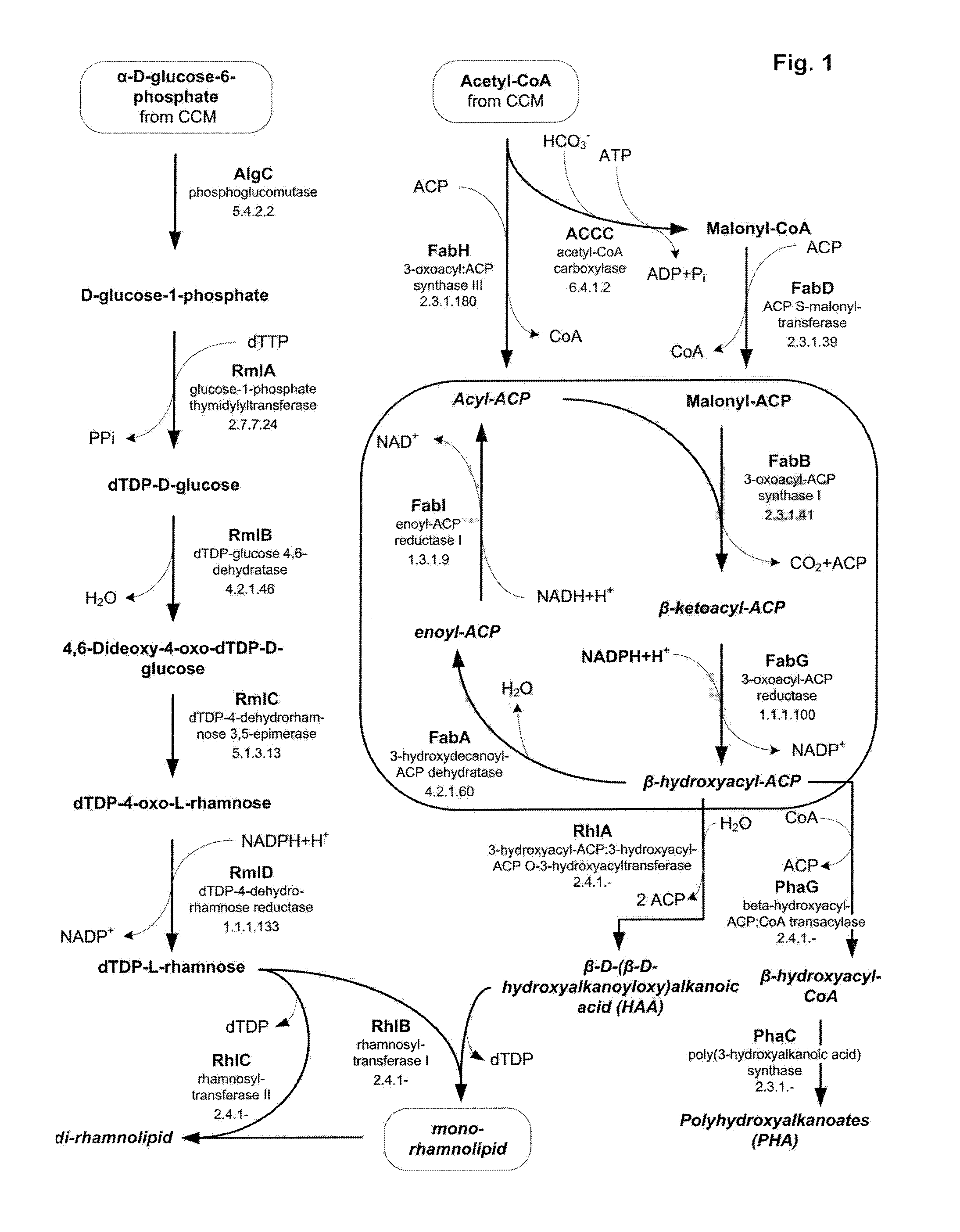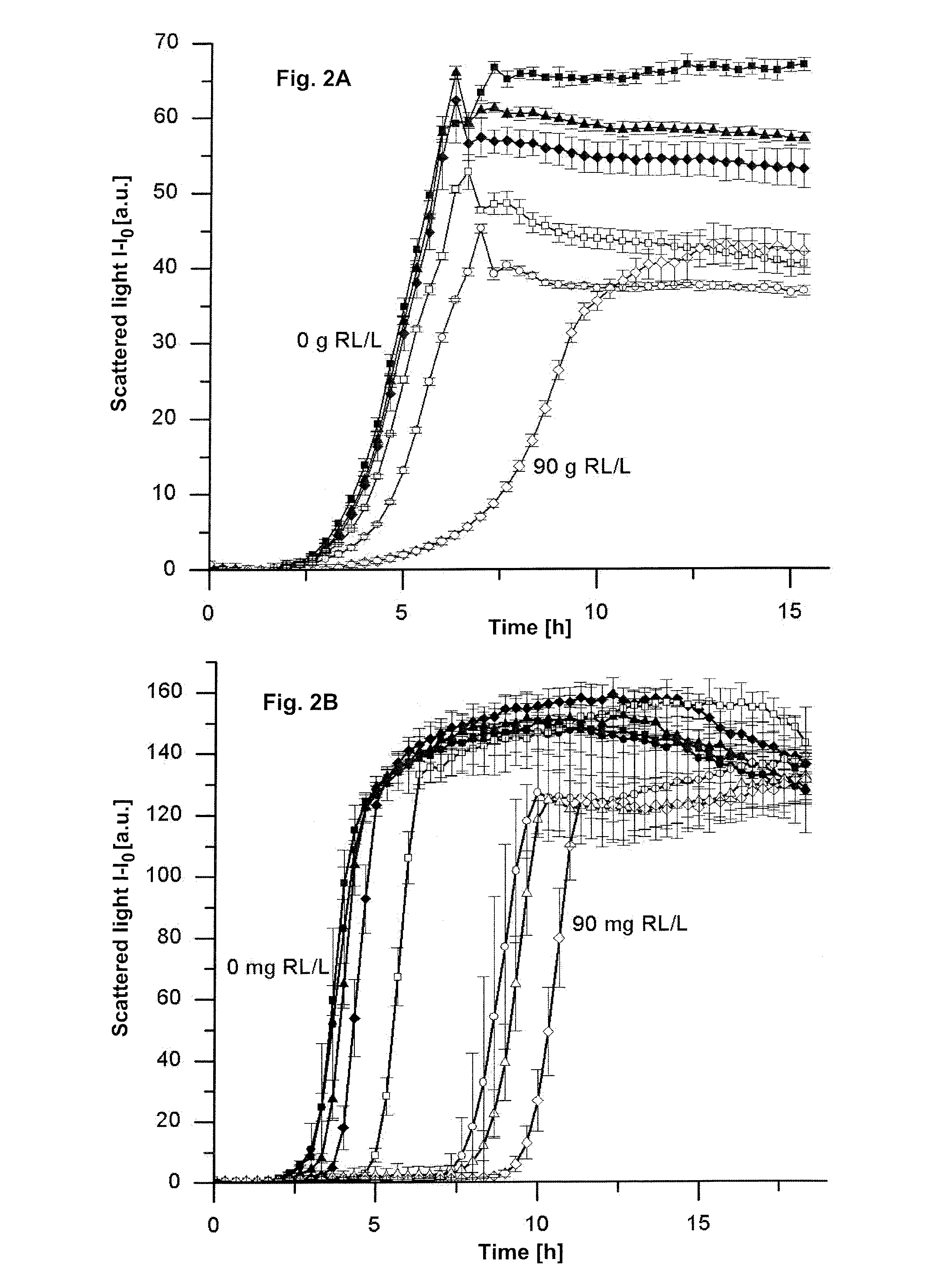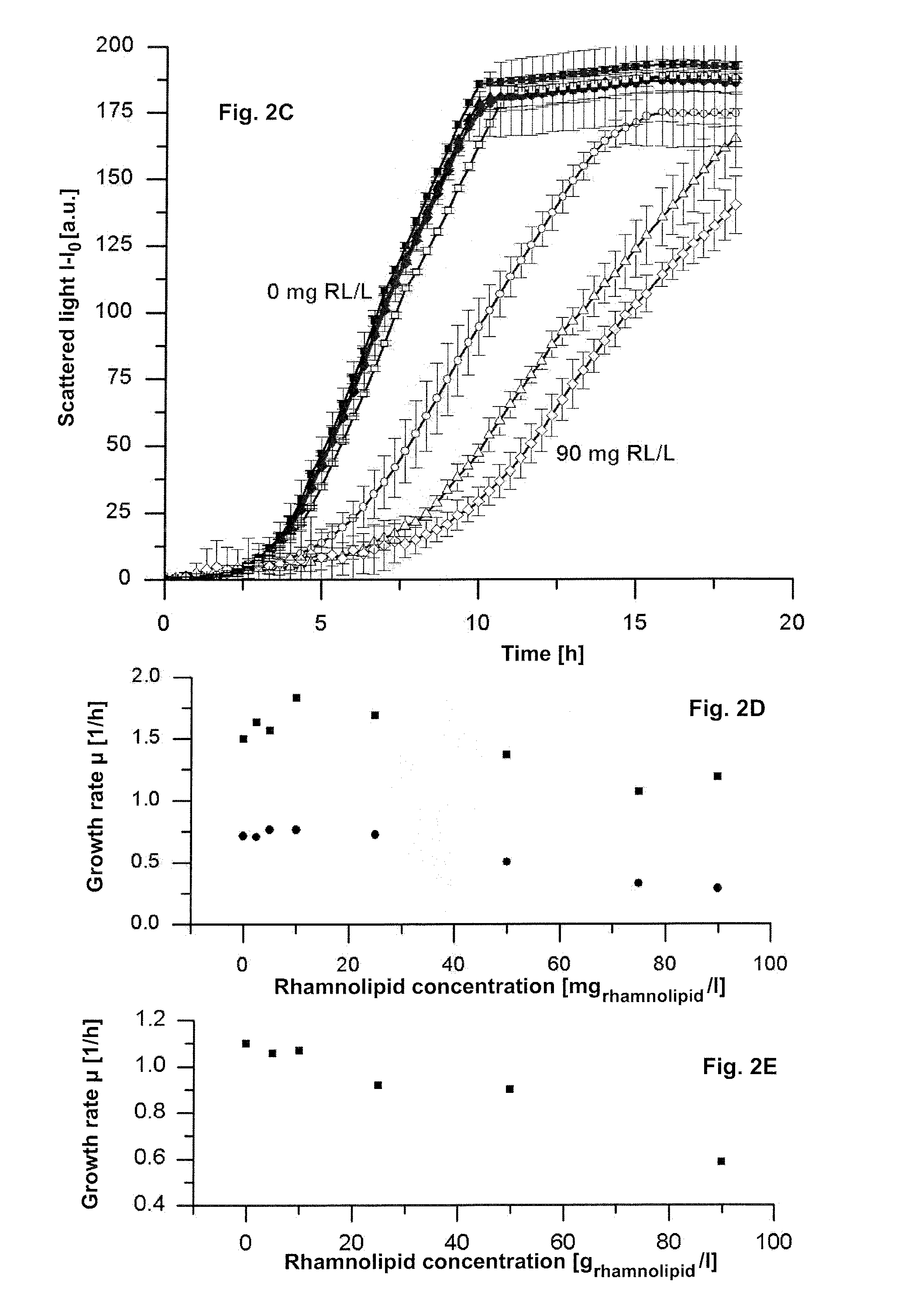Means and methods for rhamnolipid production
a rhamnolipid and method technology, applied in the field of host cells, can solve the problems of unsatisfactory yield, no attempts have been made to achieve control over the variety of rhamnolipids formed, and bacteria usually do not feature the needed resistance to substrates or even products, and achieve the effect of increasing the level of translation products (proteins) and high yield
- Summary
- Abstract
- Description
- Claims
- Application Information
AI Technical Summary
Benefits of technology
Problems solved by technology
Method used
Image
Examples
examples
A: Production of Pseudomonas aeruginosa Rhamnolipids in Pseudomonas putida KT2440
[0163]Materials and Methods
[0164]Bacterial Strains, Culture Conditions and Plasmids
[0165]The used bacteria strains Pseudomonas aeruginosa PAO1 (Hancock, R. E., & Carey, A. M., J. Bacteriol. (1979) 140, 902-910), Pseudomonas putida KT2440 (Nelson, K. E., et al., Environmental Microbiology (2002) 4, 12, 799-808; Ramos-Diaz, M. A., & Ramos, J. L., Journal of Bacteriology (1998) 180, 23, 6352-6363), Escherichia coli DH5α (Hanahan, D., Journal of Molecular Biology (1983) 166, 4, 557-580), Bacillus subtilis TEB1030 (Eggert, T., et al., FEBS Letters (2001) 502, 3, 89-92) and Corynebacterium glutamicum ATCC 13032 (Kalinowski, J., et al., J Biotechnol (2003) 104, 1-3, 5-25) were routinely cultivated in LB-medium (10 g / L tryptone, 5 g / L yeast extract, 10 g / L NaCl) at 37° C. and 30° C. for P. putida and C. glutamicum respectively. P. putida and E. coli containing the vector pVLT33 (Lorenzo et al. 1993a) and deriva...
PUM
| Property | Measurement | Unit |
|---|---|---|
| temperature | aaaaa | aaaaa |
| retention time | aaaaa | aaaaa |
| temperatures | aaaaa | aaaaa |
Abstract
Description
Claims
Application Information
 Login to View More
Login to View More - R&D
- Intellectual Property
- Life Sciences
- Materials
- Tech Scout
- Unparalleled Data Quality
- Higher Quality Content
- 60% Fewer Hallucinations
Browse by: Latest US Patents, China's latest patents, Technical Efficacy Thesaurus, Application Domain, Technology Topic, Popular Technical Reports.
© 2025 PatSnap. All rights reserved.Legal|Privacy policy|Modern Slavery Act Transparency Statement|Sitemap|About US| Contact US: help@patsnap.com



